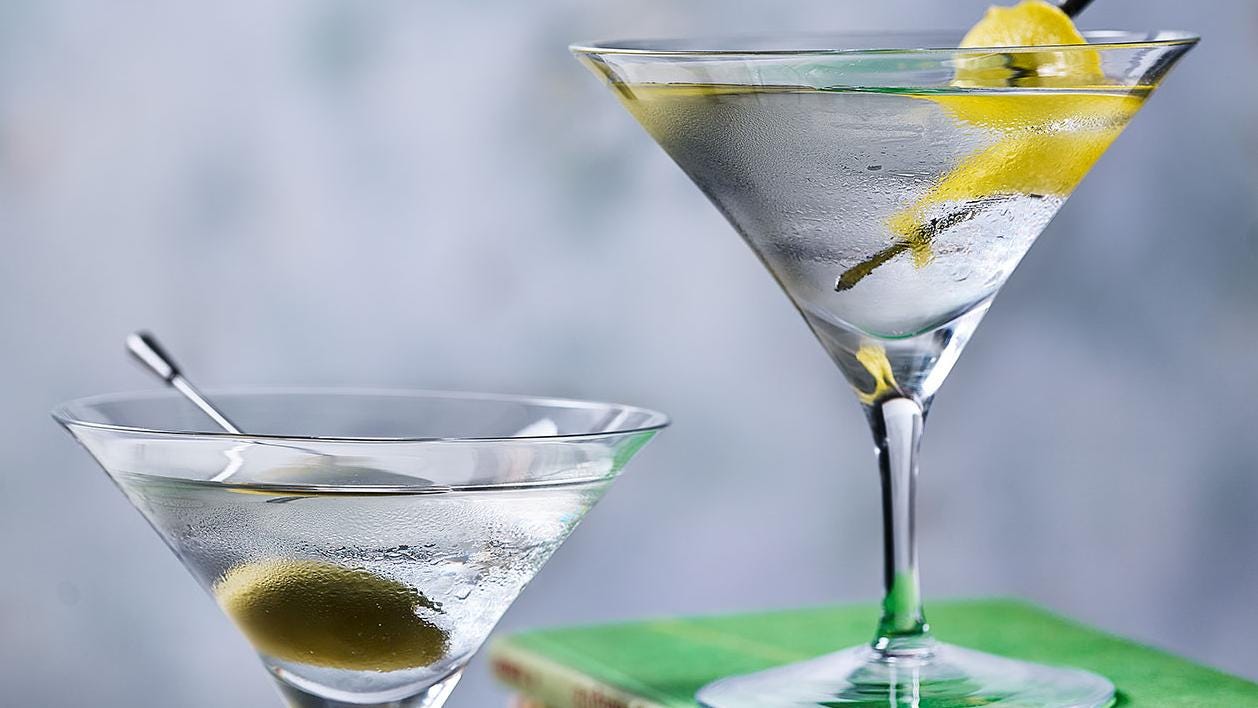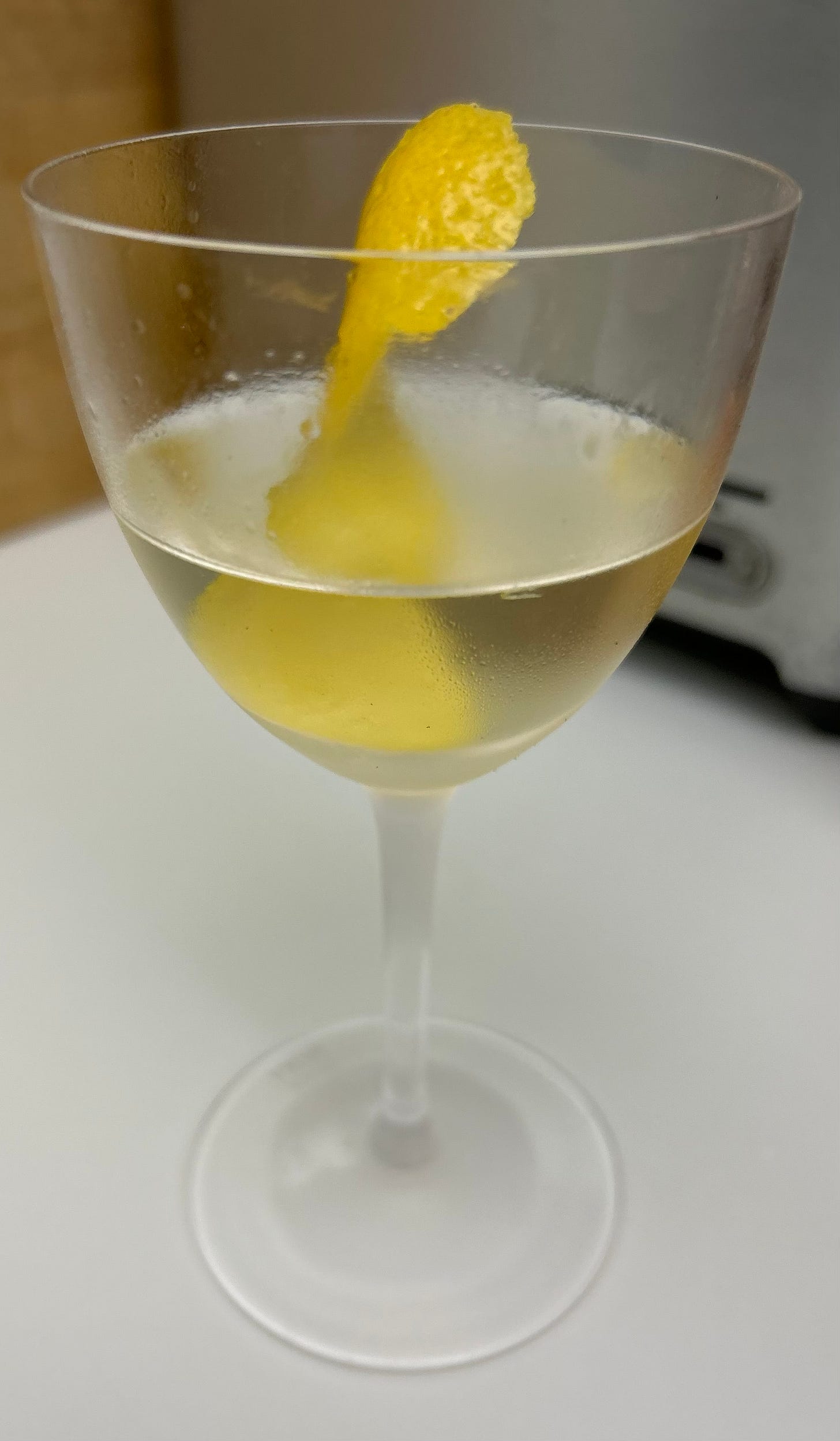My goal for the day was simple. Make my first Martini.
Ever.
I’m much more of a brown spirits lover. Tell me there is some kind of whisky in a cocktail and I’ll probably like it. I can crank out pretty good Old Fashioned, Manhattans, and recently I’ve started building Sazeracs. For many years, if it wasn't whisky, it was red wine, likely a big, bold California cabernet. I just never gravitated to anything else.
I’ve made a run at gin and vodka cocktails once or twice. Back in my youth, when I wanted to look “sophisticated”, I’d order a Tanqueray and tonic. I liked those cocktails, and I still do, I just never really order them. If I want to look “sophisticated” now I’ll almost certainly go for a double of a really nice single-malt scotch with a water back.
Now, it’s not that I’ve never had a Martini. I have ordered a few of them over the years, in a variety of different styles. But, the Martini has become one of those drinks, the kind where you need to have a little background knowledge before you order, or who knows what the Hell you might end up with. My first experience with a Dirty Martini was, memorable. I had no idea what I was getting and was more than a little surprised at the amount of olive brine added to that drink. I wasn’t a fan.
Recently I’ve done a bit more research into the Martini in the hopes that I can expand my classic cocktail repertoire. So, this morning, I decided today was the day. In the interest of full transparency, it had a lot to do with the fact that my Regan’s Orange Bitters were delivered yesterday. Yep, I’m gonna use orange bitters. And this was going to be a classic martini. Gin and dry vermouth.
So I stuck a nice Nick & Nora glass in the freezer to chill and set about building my cocktail. Why did I use a Nick & Nora? I use that type of glassware for a lot of my up drinks. I like the way they look and I think they are a bit more stable than a lot of up glassware. Plus, I don’t currently have any "Martini glasses”, and I’m not yet ready to invest in those. Let’s see how this project turns out.
My base spirit for this experiment was Bombay London Dry gin. It’s a classic London Dry that I happened to have on hand. I had picked up some Carpano Dry Italian vermouth recently, thinking I might run this experiment. I already mentioned the orange bitters - Regan’s No. 6. And the garnish? Lemon twist. A straightforward, classic Martini. Easy, yeah?
Well…
There is one aspect of this build we haven’t touched on yet: the all important ratio.
The Martini is a very interesting cocktail in that, over the years it has morphed into a drink that each individual consumer can make to their exact specification, primarily by altering the ratio of gin and vermouth. Want a drier (read: less sweet) Martini? Alter the ratio by using less vermouth.
Various recipes exist that touch on ratios. For example, using a 1:1 ratio of gin to vermouth produces a 50/50 Martini. From there, the ratio can be decreased, making the martini drier and drier as less and less of the vermouth is added. Winston Churchill is said to have enjoyed his martinis “while observing the vermouth from across the room.”, meaning his martini was as dry as you can get; a chilled glass of gin diluted slightly by the process of stirring it over ice. It’s really up to the consumer, and it takes some time to figure out how dry you wanna be.
For my first run at making this cocktail the ratio I settled on was 3 parts gin to 2 parts vermouth. This sounded like a reasonable starting place that would allow me to tease out all the components of the drink to see how they played together.
So off I went. I tossed one of the Nick & Nora glasses into the freezer (I didn’t actually toss it, mind you), got my mixing vessel out and started building. I made the garnish first, a decent-sized chunk of lemon peel. I shook two quick dashes of the Regan’s into the mixing glass, then one ounce of Carpano Dry vermouth, followed by an ounce and a half of the Bombay gin. I quickly filled the glass mixing vessel with ice, and used my trusty bar spoon to stir. I stirred the mixture for about 30 seconds, until I could feel the previously room-temperature mixing vessel go cold in my hand. That was my queue. It was time.
I grabbed my now nicely-chilled Nick & Nora from the freezer and strained my concoction into it, expressed the lemon peel about 4 inches from the top of the drink to get a nice coating of lemon oil across the top of the cocktail and stopped. I hadn’t given any consideration as to whether I would express and discard, or place the garnish in the cocktail. I thought about it for a second, and then placed the garnish in my drink. And then I sipped.
It was…
Good. Really good.
The lemon oil expressed from the peel gave it a lovely citrus aroma and a lively brightness. The drink was ice-cold, and had a nice, silky texture. The botanicals from the gin and the herbal character of the vermouth played very well together. This was not like any of the previous martinis that I had tried. I sipped the drink slowly to see how it changed with a little time. It held up remarkable well. The martini is a relatively small cocktail, and so it drinks fairly quickly, meaning that if it is served ice cold, it’s not going to warm that much during consumption. It’s also served up, without any ice, meaning that there is nothing to melt and further dilute the cocktail while you drink it.
All in all, I was very pleased with my first go at this most classic of classic cocktails, and I will be making more. I’m looking forward to playing with the ratio, and trying some different vermouth and gin combinations to come up with “my” martini.
Oh yeah, you might be wondering - am I going to invest in Martini glasses? Nope. The Nick & Nora works just fine for me.
Thanks for reading, and keep on mixing!






